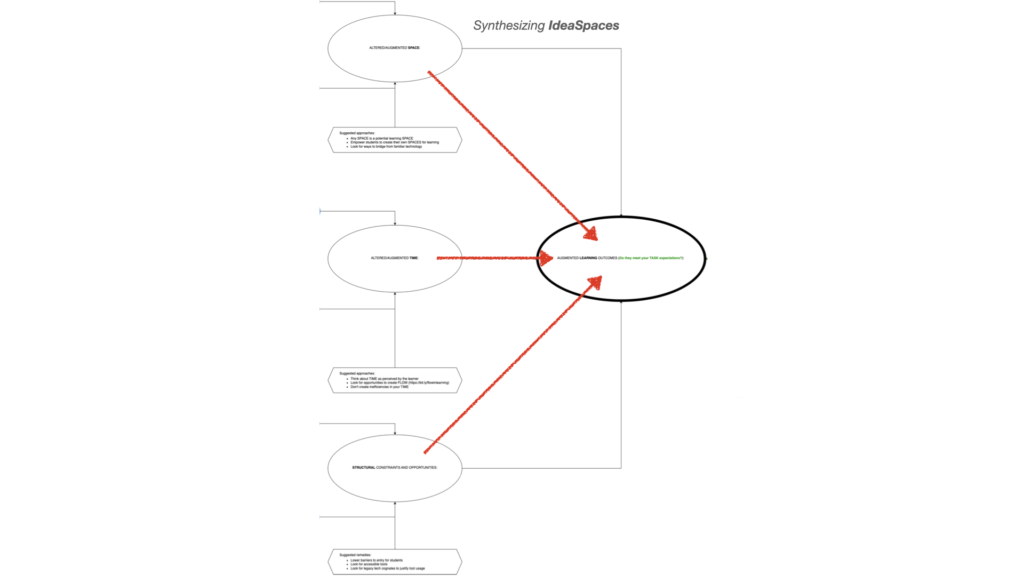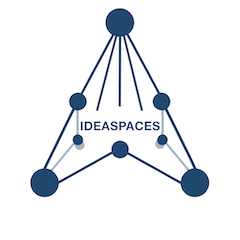| Overview | Analyzing SPACE | Analyzing TIME |
| Analyzing STRUCTURE | Synthesizing IdeaSpaces | Analyzing Learning Activities |
To use the tool, simply go to https://bit.ly/toolaugmentationtool, hover your cursor over the bottom and select the pencil (edit). This will download an editable copy to your desktop. You will need to either download the Diagrams.net app or upload the file to their online app.

IdeaSpaces is a holistic concept so we need to analyze how SPACE, TIME, and STRUCTURE come together to create new environments.
The last step in any Tool-to-Task analysis process is synthesizing the insights gleaned from your three separate analyses of SPACE, TIME, and STRUCTURE.
Central to this process is the development of a set of tasks that will be augmented by the tool in question, how those tasks will be augmented, and whether the tool ultimately meets the minimum requirements of what we’re trying to achieve given the constraints of the three variables. We must acknowledge any opportunity costs at the stage. By synthesizing these variables, we can construct an overall picture of what is possible with the tool.
Parallel to this effort, end users must develop a set of goals and tasks to compare with the outcomes of your tool analysis. It is probably unrealistic to expect a 100% match between the two lists, but at least we will see what additional tools we might need, or how a tool might have to be adapted to meet the human needs that form our goal.
There are many potential users of the Tool Augmentation Tool.
- Technologists can use it to solve organizational or individual challenges.
- Teachers or trainers seeking to achieve learning goals can deploy it as part of their instructional design strategy.
- Software and hardware designers can employ it to optimize their tools for customer-centric goals as part of an overall design thinking process.
- Organizational leadership can apply it to create environments conducive to their organizational goals. They can then construct systems to support those goals facilitated by the strategic use of tools.
The process of synthesis will be slightly different for each one of these groups. Some groups will have a predefined set of requirements and goals before them. Others will be attempting to define the possible by designing and implementing suites of tools. Still others may be working to optimize an existing or planned tool for a particular set of needs.
In all of these groups, the understanding of tools as a means of human augmentation must be central to any discussions. We should redesign or discard any tool that does not meet those minimum requirements. The realities of human behavior and resistance to change should always be a part of the conversation. We cannot ignore the need to create appropriate systemic strategies necessary for the success of the project.
The last section of this tutorial will cover an alternative way of engaging in this analysis: namely, in reverse.

